Update: ‘BYD Seal Price, Release Date & Competitors’ section and ‘EU & the UK’ sub-section of ‘BYD Seal global launch’ updated.
The BYD Seal (BYD Atto 4 in some overseas markets) is part of the brand’s ‘Ocean’ series of future EVs. The model will be available for purchase in more global markets in the coming months. Here’s everything we know about the next-gen Chinese electric sedan:
Target customer
The BYD Seal is for customers who are on the market for a high-tech mid-size electric sedan like the Tesla Model 3 but with more affordable pricing. It’s also an attractive option against electric SUVs like the Tang and the Yuan Plus (Atto 3) for customers who seek the comfort and driving dynamics of a sedan. The pricing is also such that it seems a cheaper alternative to the brand’s own mid-size electric SUV.
Design

The Seal may look familiar if you’ve seen the Han EV, but it wears a distinctive exterior design inspired by the BYD Ocean X concept. The most attractive design feature in daylight is the car’s athletic proportions, particularly the tight rear end.
Front
At the front, the Seal features a low hood, slim headlamps with a Renault-style C-shaped extension below it, a smooth bumper, slanted vertical side air inlets in an artistic design, and an A-shaped compact lower air intake.
Side
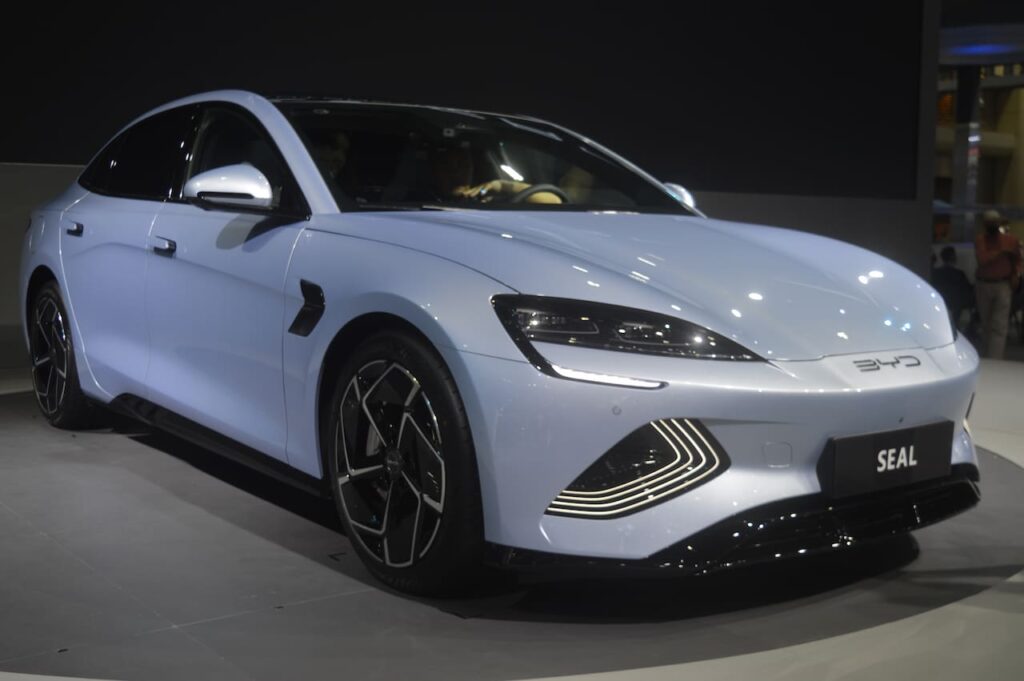
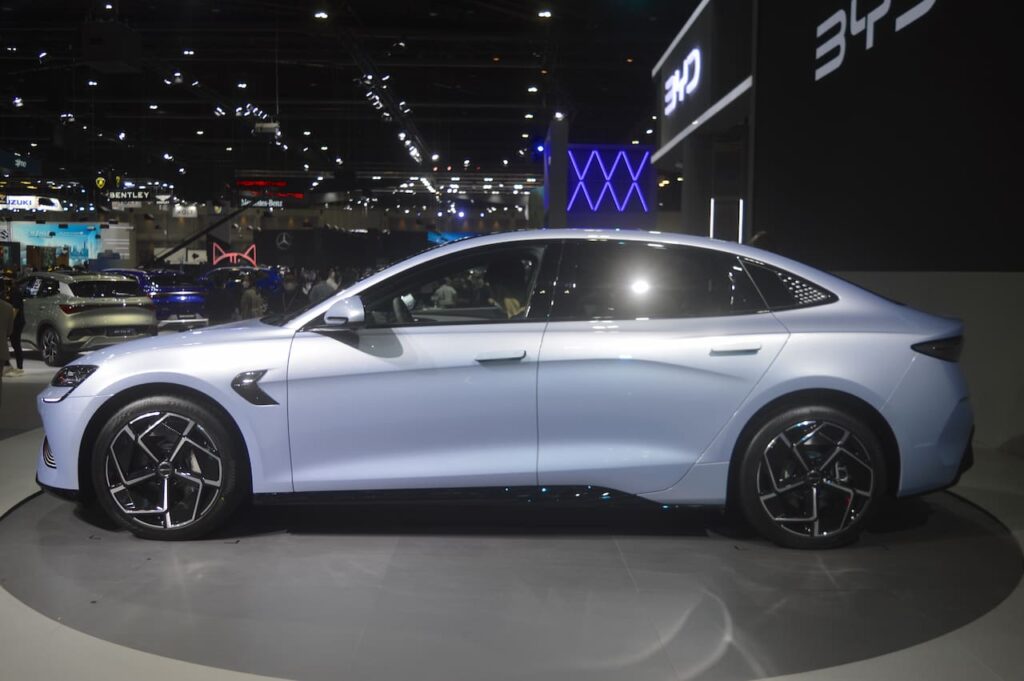
The Seal flaunts a four-door-coupe look with a sleek roofline and a bow-shaped greenhouse. Arrow-shaped applique on the front quarter panels, flush door handles, smooth sculpting on the doors, water drop-like motif on the C-pillars (view on YouTube), and shark gill-like inserts in the rocker panels are the other noteworthy aspects of the sides.
Rear
At the rear, the new electric sedan has a full-width taillamp reminiscent of the Mercedes EQE, vertical side air outlets, a diffuser-style bumper, and separate reverse lights positioned alongside fog lights on the bumper.
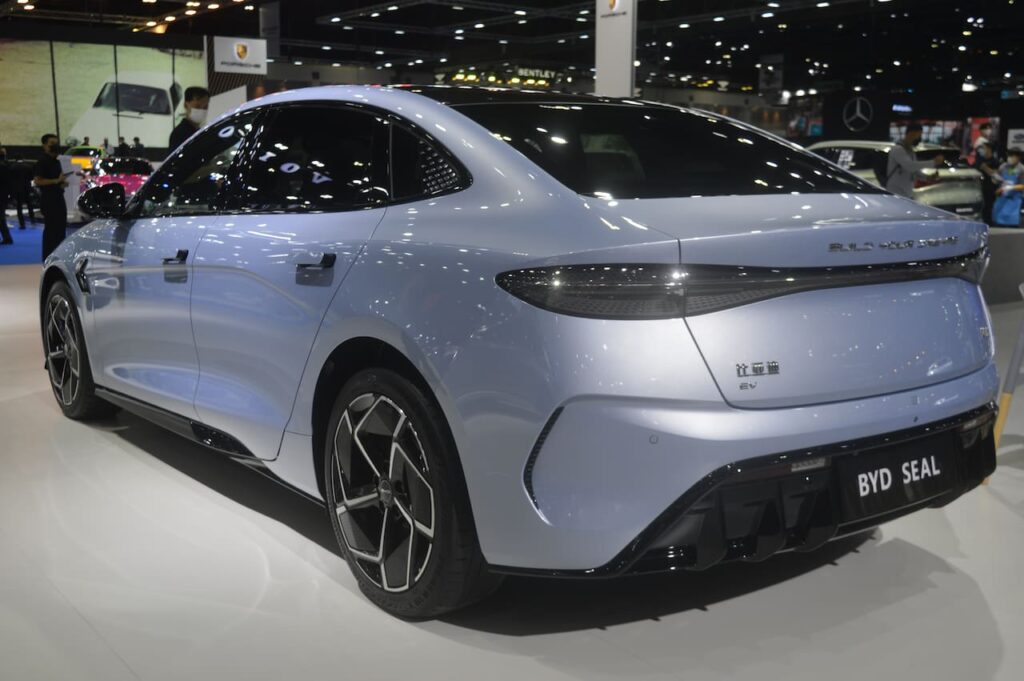
Overall, the only downside is that the silhouette isn’t unique compared to rivals like the Tesla Model 3 and Nio ET5. The aerodynamic exterior should have a positive impact on energy consumption and cabin comfort, though. It will likely lead to a longer range, and fewer charging cycles would also mean prolonged battery life.
BYD Ocean series vs Dynasty series
BYD’s Ocean series features a more fluidic and aerodynamic design than its Dynasty series, which includes the Han EV. The new design language aligns with global design trends, to make them more competitive in the export markets as well. We observe added aggression, sportiness, sophistication, and a sense of premium character that is different from the Dynasty models. The Seal should also be the most aerodynamic and efficient model in the Ocean line-up.
The driver’s seat is 8-way electrically adjustable and includes 4-way electrically adjustable lumbar support and memory, ventilation, and heating functions as well. The front passenger’s seat offers 6-way electric adjustment, ventilation, and heating. There are two cupholders between the front seats and also between the rear outboard seats. A dual-zone automatic climate control system with a heat pump that reuses waste heat energy to reduce energy consumption and a PM2.5 air filtration system are standard features. Also included across the range is a panoramic sunroof that has a light sensor for automatically adjusting its transparency.
Interior
Seating and comfort
The BYD Seal offers premium seating for five occupants with sporty seats featuring ample side bolstering in the front and a luxurious bench in the back. Light blue dominates the interior, in line with the ocean theme of the model family, and the white seats feature light blue piping for a contrasting look. The door handles are shaped like a shell, and the Alcantara usage adds to the cabin’s premium appeal. Customers can comfortably load the luggage into the boot, which has a flat floor, thanks to a low loading lip and a wide aperture.
The driver’s seat is 8-way electrically adjustable and includes 4-way electrically adjustable lumbar support and memory, ventilation, and heating functions as well. The front passenger’s seat offers 6-way electric adjustment, ventilation, and heating. A dual-zone automatic climate control system with a heat pump that reuses waste heat energy to reduce energy consumption is standard. Also included across the range are a PM2.5 air filter and a panoramic sunroof with a light sensor for automatically adjusting the transparency.
Features
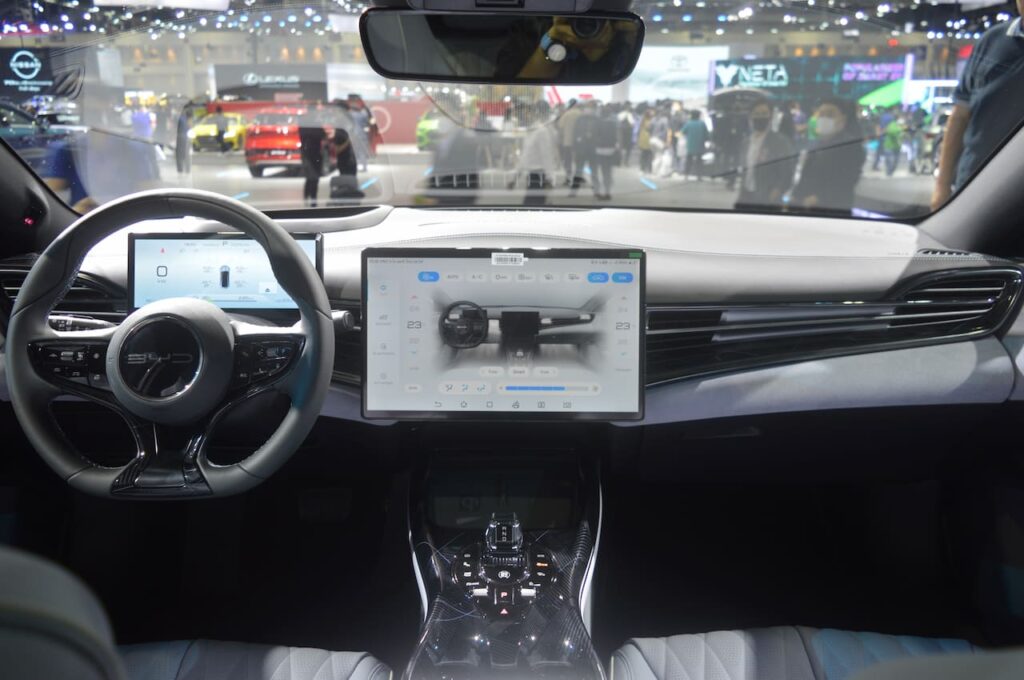
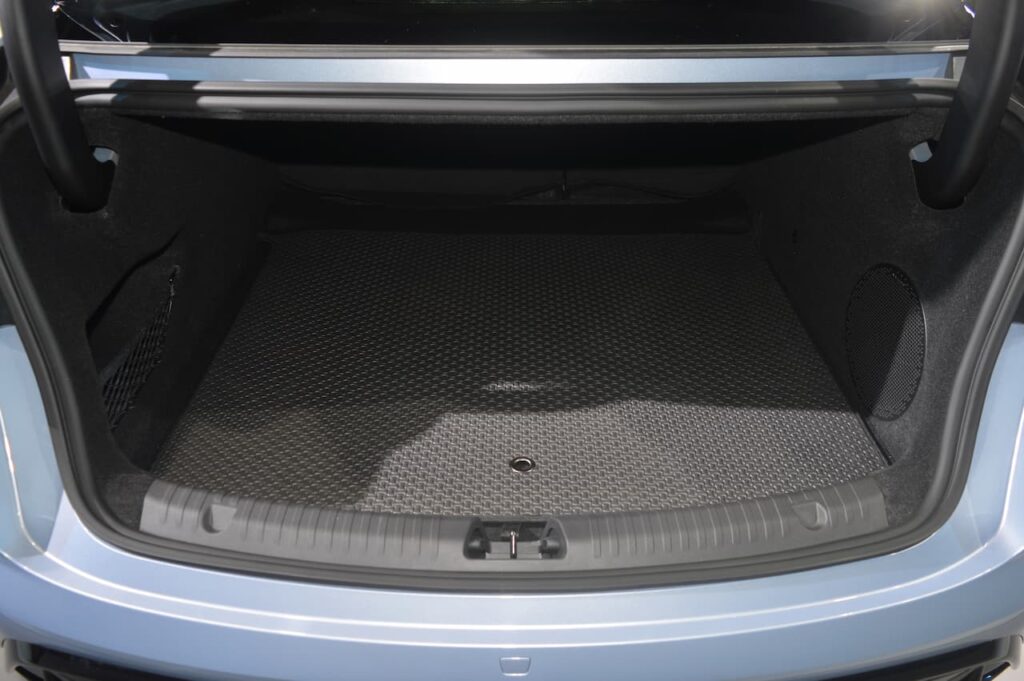
The electric sedan features a minimalist interior with ocean-themed blue colors on various elements. It has a sleek dashboard with wide and curvy (outer-end) AC vents, a W-HUD, a 10.25-inch large digital instrument cluster, a wavy, bridge-type center console that houses a stubby drive selector, parking brake, two scrollers, a park assist button, and other drive controls, and NFC-based digital key. BYD-branded door sills, Qi wireless charging pad, and Dynadash audio system are other equipment highlights of the interior.
Infotainment
The Seal features a 15.6-inch tablet-style touchscreen infotainment system that tilts. The driver can change the orientation from landscape to portrait as per their preference. The 5G-enabled system includes BYD’s DiLink intelligent connected system that allows customers to install smartphone-like applications in the infotainment system.
Specifications
Platform
Underpinning the Seal is the bespoke BYD e-Platform 3.0, which supports RWD (like in the case of this sedan) and AWD electric drivetrain layouts. The platform would support short charging times, greater battery isolation from varying weather conditions, and long-range.
The new BYD EV has a double-wishbone suspension at the front and a five-link independent suspension at the rear. Though smaller than the Han EV, it has the same wheelbase, thanks to the dedicated EV platform. Customers will get a comparable room in a smaller footprint, and the smaller dimensions would help in maneuverability and parking.
Battery Life & Charging
The Seal is BYD’s first model to feature CTB (cell-to-body) battery technology. Integrating the battery into the body allows applying the sandwich structure, previously used for the battery pack, in the vehicle itself. The top cover of the battery pack is integrated into the floor of the vehicle’s body. CTB has led to a 100% increase in torsional stiffness (compared to conventional designs) – 40,000+ Nm/°.
The CTB layout has allowed raising the height of the chassis, which means the car is less prone to being damaged by bumps. Plus, the volume utilization is also better – 66%. Lastly, in case of a side collision, the higher stiffness should protect the car more.
Two battery pack capacity options are available to BYD Seal customers in China: 61.4 kWh and 82.5 kWh. The charging power (DC), depending on the configuration, is either 110 kW or 150 kW. The 30-80% charging time may not take more than 30 minutes.
Motor & Range
The 61.4 kWh battery pack is available in two 150 kW (201 hp) single-motor RWD configurations that deliver a range of 550 km (342 miles). A 0-100 km/h (0-100 km/h) sprint takes 7.5 seconds in the base variant. 110 kW is the maximum DC charging power, and at the peak rate, charging from 30 to 80% SoC takes 30 minutes.
The 82.5 kWh battery pack delivers a CLTC range of 700 km (435 miles) in a 230 kW (308 hp) single-motor RWD configuration and 650 km (404 miles) in a 390 kW (523 hp) dual-motor AWD configuration. The mid-level variant can accelerate from 0 to 100 km/h (0 to 62 mph) in 5.9 seconds, while the top-end variant can accomplish the same in just 3.8 seconds. These configurations allow DC fast-charging at up to 150 kW, but a 30-80% top-up takes the same time – 30 minutes.
iTAC
The Seal is BYD’s first car to feature its new iTAC technology. Short for “intelligence Torque Adaption Control,” the system aims to offer more traction than a conventional stability control system that uses wheel sensors to monitor speed changes and brakes to intervene when needed.
A wheel-speed sensor divides each turn of the wheel end into 32 or 48 acquisition bits. In iTAC, the wheel end of each turn can be divided into 4,096 bits, which means the speed and accuracy of the information collected are significantly higher. iTAC can adjust the torque delivery of the motor(s) in real time as required. It can transfer part of or all the torque to the wheel with more grip and avoid triggering the ESP. When BYD tested on snow, it observed that vehicles with iTAC can accelerate from 0-60 km/h (0-97 mph) 0.7 seconds faster. Plus, when drifting, these vehicles don’t require excessive direction correction.
| Aspect\Specification | Base Variant | Mid-level Variant | Top-end Variant |
| Length/Width/Height | 4,800 mm/1,875 mm/1,460 mm | 4,800 mm/1,875 mm/1,460 mm | 4,800 mm/1,875 mm/1,460 mm |
| Wheelbase | 2,920 mm | 2,920 mm | 2,920 mm |
| Tires | 225/50 R18 | 235/45 R19 | 235/45R19 |
| Drivetrain Layout | RWD | RWD | AWD |
| No. of Motor(s) | One | One | Two |
| System Power | 150 kW (201 hp) | 230 kW (308 hp) | 390 kW (523 hp) |
| System Torque | 310 Nm (229 lb.-ft.) | 360 Nm (266 lb.-ft.) | 670 Nm (494 lb.-ft.) |
| 0-100 km/h (0-62 mph) Acceleration Time | 7.5 seconds | 5.9 seconds | 3.8 seconds |
| Battery Pack Capacity | 61.4 kWh | 82.5 kWh | 82.5 kWh |
| Range (CLTC) | 550 km (342 miles) | 700 km (435 miles) | 650 km (404 miles) |
| AC Charging Power | 7 kW | 7 kW | 7 kW |
| DC Charging Power | 110 kW | 150 kW | 150 kW |
| 30-80% DC Charging Time | 30 minutes | 30 minutes | 30 minutes |
First impressions
Autohome took the BYD Seal for a test drive and was impressed with its performance. The mid-level variant, which is focused on maximizing range (700 km), offers superb acceleration, according to the Chinese publication.
There’s no wheel slip in a 0-100 km/h sprint; the car is buzzing with stamina at the start and maintains that till reaching the three-digit figure. The braking performance is surprisingly good, with just 35.9 meters of distance covered when stopping from 100 km/h. The Seal is an impressively quiet cabin, according to the Chinese publication. This is yet one more area where the Chinese sedan impresses.
BYD Seal Price, Release Date & Competitors
The BYD Seal’s prices start at CNY 189,800 (USD 26,812) and go up to CNY 279,800 (USD 39,525).
The Seal competes with the Tesla Model 3, which is available in a single-motor RWD variant for a price of CNY 231,900 (USD 32,759) and a dual-motor AWD variant for a price of CNY 331,900 (USD 46,885). Another Seal rival is the Nio ET5, which retails at CNY 328,000 (USD 46,334) in a standard-range variant and CNY 386,000 (USD 54,527) in a long-range variant.
Production & sales
BYD makes the Seal in Changzhou (Jiangsu Province), China. The company could eventually manufacture 15,000 units of the new electric sedan every month (180,000 units yearly).
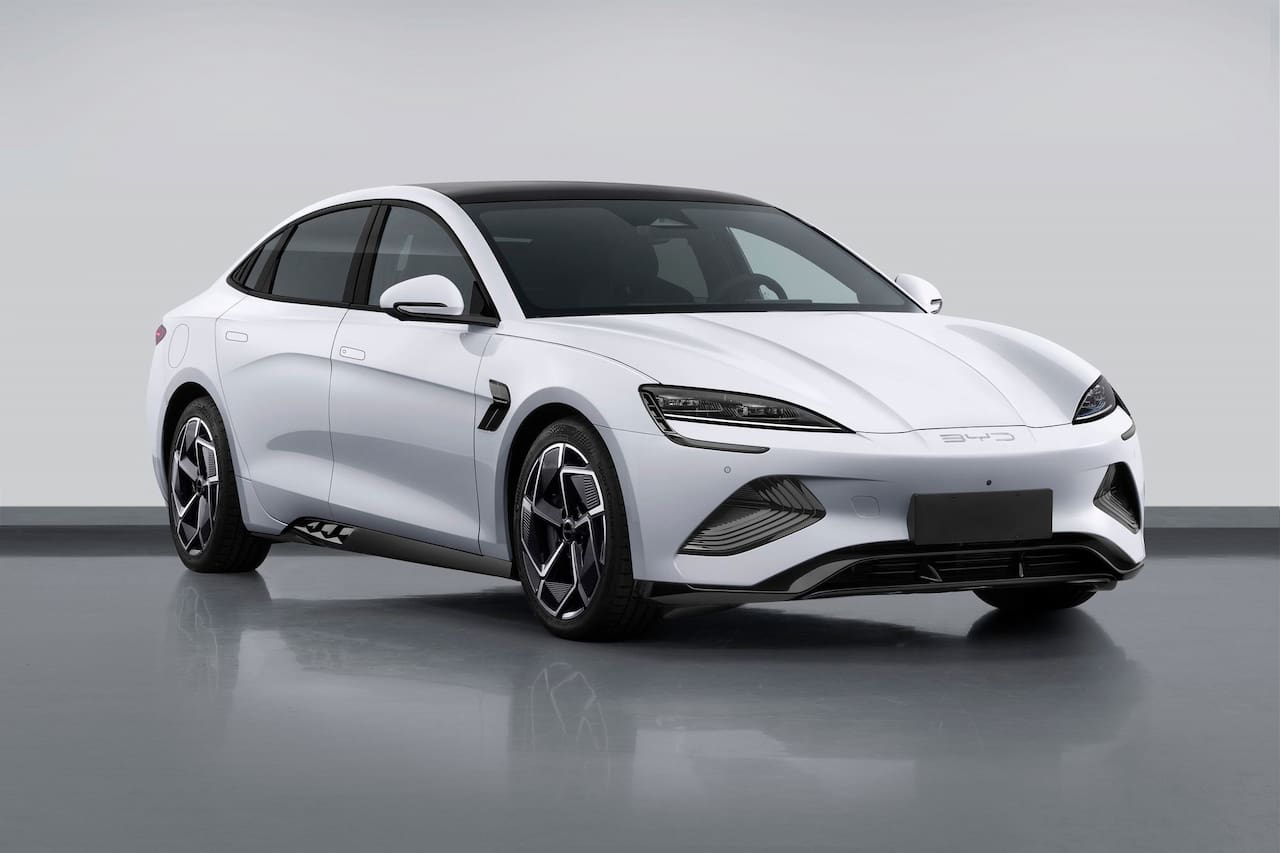
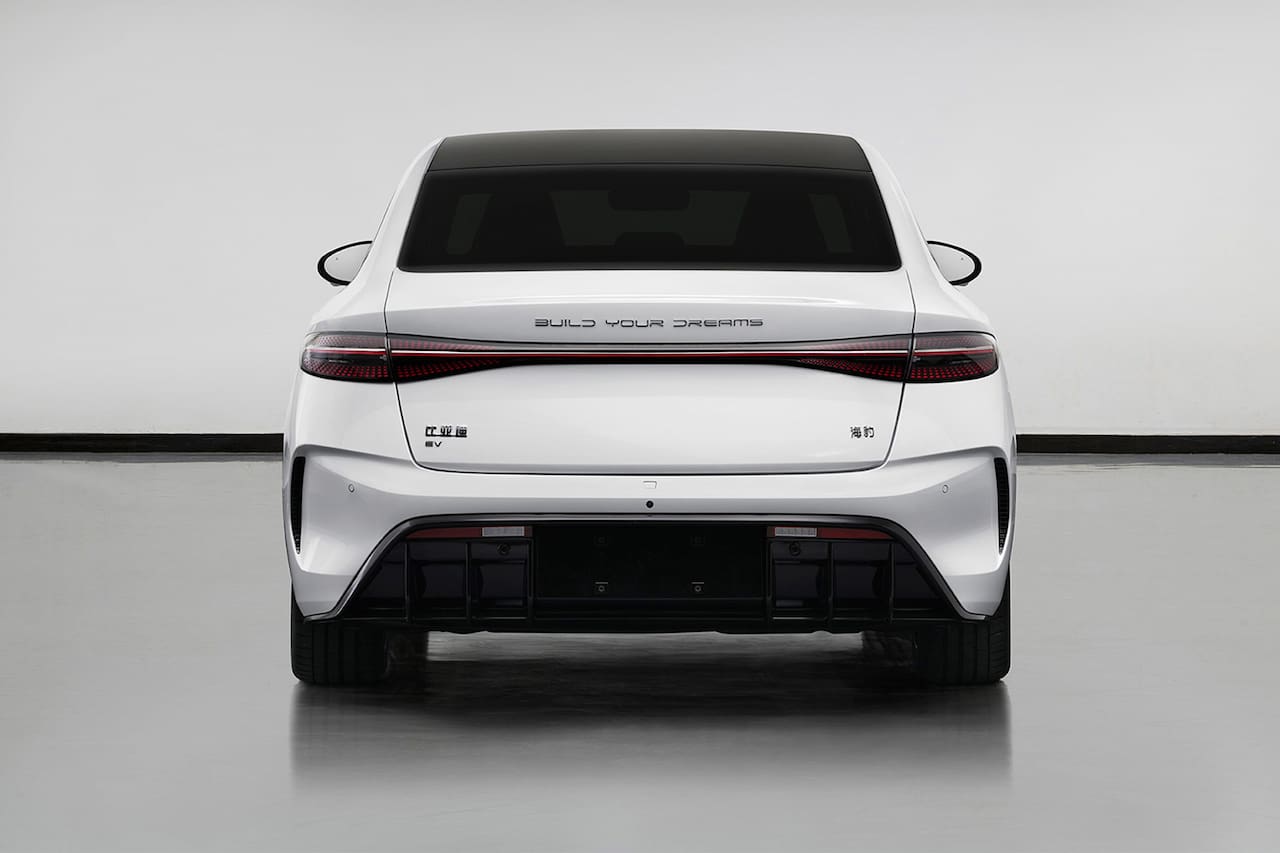
Analysts expect the Seal to create a splash and pose serious threats to popular electric mid-size sedans in China, as reported by CnEVPost. Xu Huixiong-led analyst team at Essence Securities has said that the Seal will likely be the most important BYD launch by far, potentially securing 30,000+ units in monthly sales. This model has significant advantages over Tesla’s Model 3, the team added. However, the proof of the pudding is in the eating!
Between August and December of last year, BYD sold 51,200 units of the Seal in China, starting from 1,726 units in the launch month and scaling up to 15,378 units in the final month of the year, CleanTechnica reported on January 9, 2023. While the company still needs to double its sales to meet its targeted 30,000+ monthly volume, the initial phase sure looks promising.
BYD Seal global launch
BYD is likely to launch the Seal in several European markets in the coming months, and then in markets in Asia and Oceania. The company has started testing the right-hand drive version of the electric sedan, pictures posted on Facebook confirmed on March 25, 2023.
EU & the UK
BYD first showcased the Seal in Europe at the 2022 Paris Motor Show (October 17-23, 2022). The company plans to launch it in the EU and the UK in August 2023. It plans to offer the electric mid-size sedan in these markets in mid- and top-level variants, rated to deliver WLTP ranges of 570 km (354 miles) and 520 km (323 miles), respectively. The Chinese automaker already sells the Atto 3, Tang EV, and Han EV in the Old Continent.
According to a Bloomberg report dated December 7, 2022, BYD manager Stella Li has confirmed that the automaker is considering establishing up to two manufacturing facilities in the continent. Interestingly, almost one in every ten cars sold in the old continent is now an EV, making this decision by BYD an easy one for the Chinese automaker.
Recent reports claim BYD is considering several Western European countries to establish its continental plant. France, Germany, and Spain are the countries it is looking at. The Chinese automaker may acquire an existing factory and modify it as needed instead of constructing a new one, which should help it save both time and money. It wants to finalize the location by December 2023 and start production in 2025.
Regional production facilities will help BYD circumnavigate high tariffs currently imposed by the EU, while also positioning itself to benefit from easier access to cutting-edge battery technologies and raw materials available in Europe. In return, the latter will enjoy the creation of fresh jobs and quicker time to market for possible region-specific models, among other gains.
Australia (BYD Atto 4)
EVDirect has earned distribution rights for BYD EVs in Australia and imports them to the country. Local reports say that it will start selling the Seal in the country this year.
Japan
On July 21, 2022, BYD announced that it will enter Japan in 2023 and launch three models in the first year – Atto 3, Dolphin, and Seal. The company plans to put the Seal on sale in Japan in the second half of 2023.
Hong Kong
The BYD Seal had its Hong Kong debut at International MotorXpo Hong Kong 2022 on December 8, 2022. According to the BYD Hong Kong website, the first right-hand drive units should reach the country in 2023. BYD operates in Hong Kong through a local distributor – JC Motor Limited.
Costa Rica
The Seal is likely to go on sale in Costa Rica as well at some point. BYD and its local distributor Cori Motors showcased it in the country at EXPOMOVIL 2023 which took place from March 9, 2023, to March 19, 2023. The Chinese automaker’s Yuan Pro is Costa Rica’s best-selling EV ever, BYD said in a related announcement. The company will likely launch more EVs, including the Seal, as part of its Cool the Earth by 1°C initiative.
TopElectricSUV says
China, a front-runner in EV technology, has another exciting new release that is relevant to car buyers in many parts of the world. The Seal mid-size sedan offers solid performance and a long range, making it perfect for anxiety-free road trips. Plus, it has plenty of high-tech features and a sporty design that will appeal to buyers of different age groups. If it proves successful at home, this could be an export hit as well!
BYD Seal FAQs (BYD Atto 4 FAQs)
What is the BYD Seal/BYD Atto 4 release date?
The BYD Seal is on sale in China. Exports will begin in the coming months.
What is the BYD Seal price?
The BYD Seal’s prices start at CNY 189,800 (USD 26,812) and go up to CNY 279,800 (USD 39,525).
Which EVs are the BYD Seal’s rivals?
The BYD Seal/BYD Atto 4 competes with the Tesla Model 3 and the Xpeng P5.
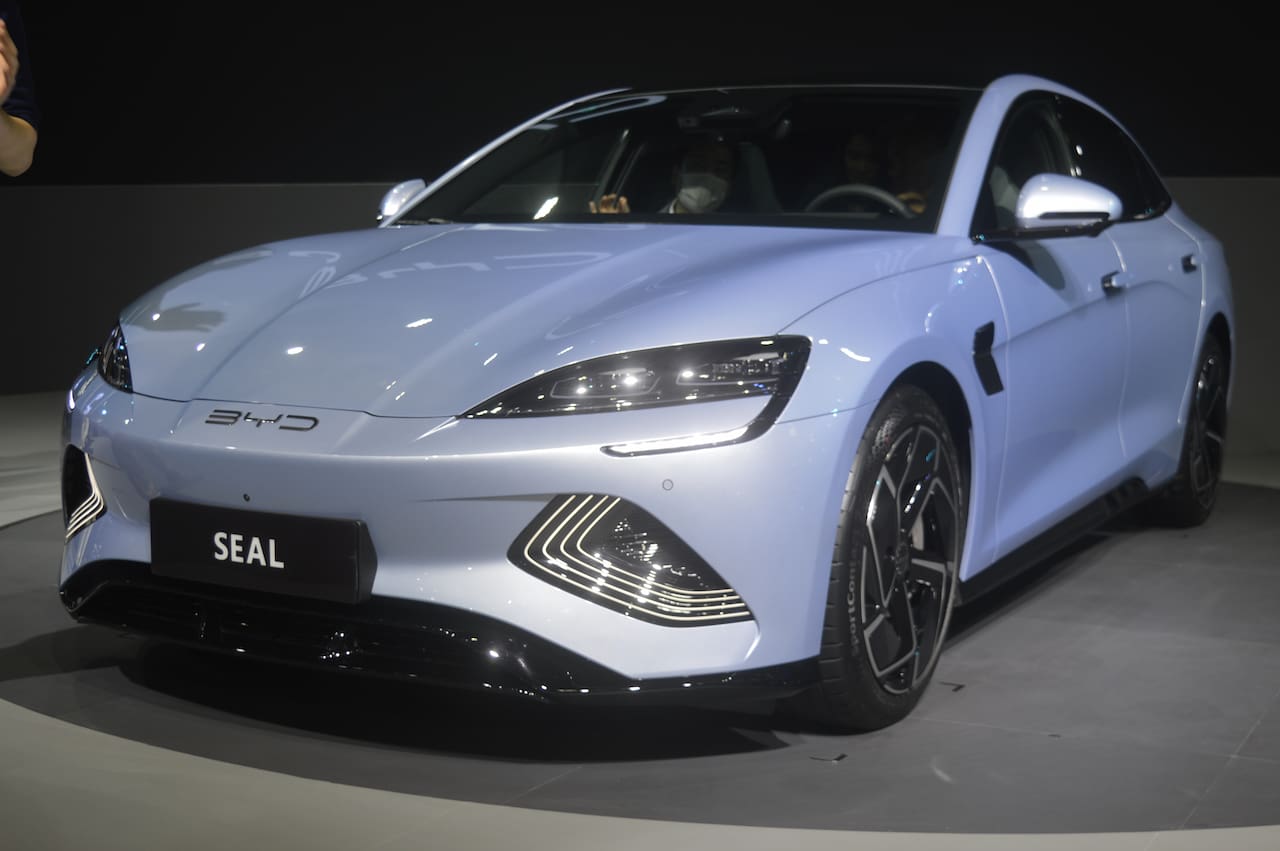

![BYD Sea Lion 07 (Atto 5/Atto 6): China’s next Tesla Model Y challenger ready [Update]](https://topelectricsuv.com/wp-content/uploads/2023/03/BYD-Sea-Lion-07-front-teaser-350x197.jpg)
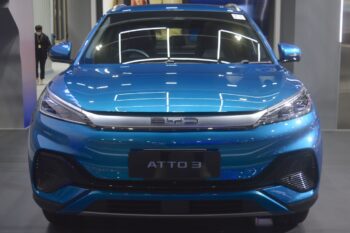
![The BYD Seagull hatchback is ready for its Chinese launch [Update]](https://topelectricsuv.com/wp-content/uploads/2023/03/BYD-Seagull-front-three-quarter-350x233.jpg)